Slave to the Game
Online Gaming Community
ALL WORLD WARS
TECHNICAL DATA ON THE DEVELOPMENT OF THE A4 V-2
by H.A.SCHULZE, 1965
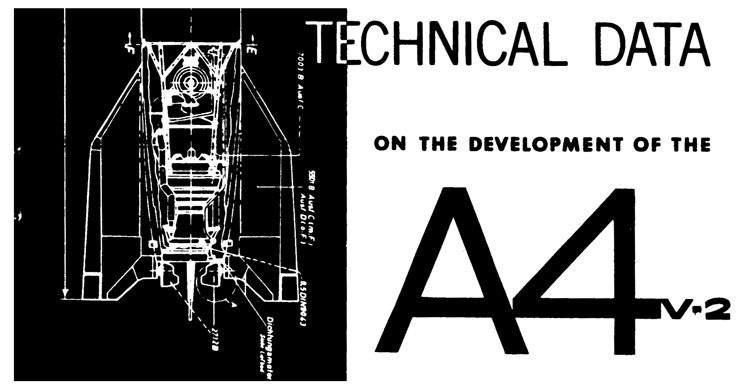
Prepared by
HISTORICAL OFFICE
MANAGEMENT SERVICES OFFICE GEORGE C. MARSHALL. SPACE FLIGHT CENTER
NATIONAL AIRONAUTICS AND SPACI ADMINISTRATION
FEBRUARY 25. 1965
BY
H.A. SCHULZE
FOREWORD
This report deals with the development of the A-4 (V-2).
It is restricted to technical data referring to dimensions, test data and test objectives, and is directed to be used as a guide line.
H. A. Schulze
F & D 876-1126
February 1965
Advice and assistance, rendered by some members of the team, are acknowledged and appreciated.
INTRODUCTION
This report was compiled from documentation on Peenemuende which was brought to the U. S. and stored for approximately 12 years at Redstone Arsenal. Before official return of these documents in the summer of 1958 to West Germany, the author screened the material and made duplicate copies of the most important data. The present report contains the significant items in this selection pertaining to "Technical Data on the Development of the A-4(V-2)"
The material is arranged in three sections. The first section begins with real early, primitive sounding rockets (A-I thru A-3) and closes with the forerunner of the V-2(A-5). The middle and basic portion of this book deals only with the A-4(V-2) by showing the development of components, diagrams, test and launch facilities as well as some pictures of A-4 launchings. Section two closes with some data on an improved A-4, the A-4b, which had wings attached to the body. The third and last portion of the book emphasizes available information on technical capabilities and trends of further developments after the A-4, from the A-6 through the A-10. None of the data in this final section beyond the A-4 was ever pursued beyond the drawing board stage.
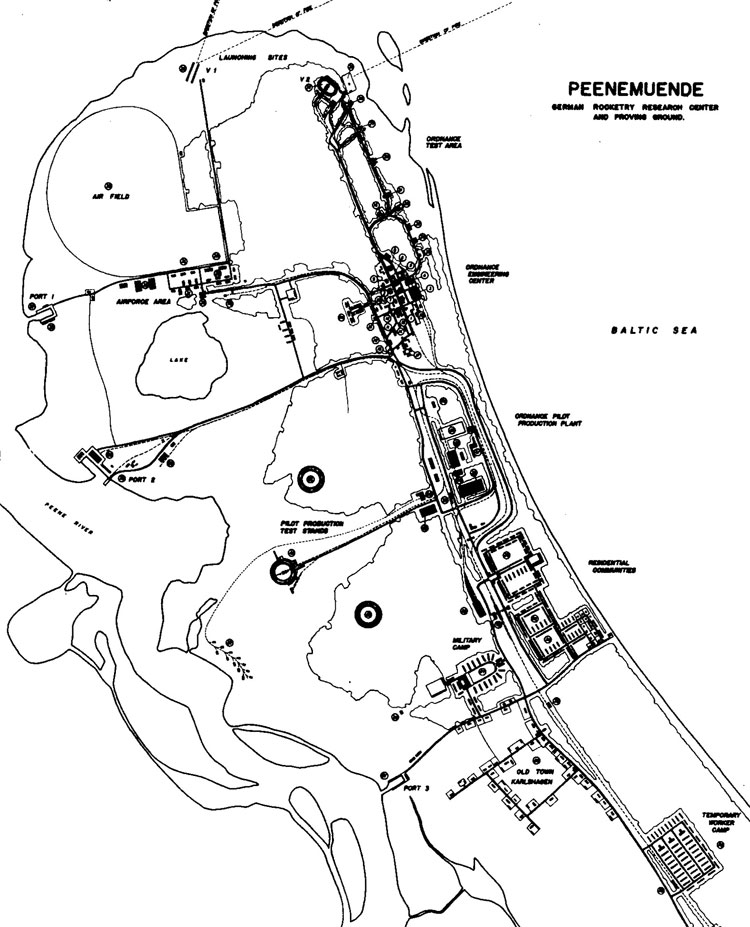
Peenemuende. German Rocketry Research Center and Proving Ground
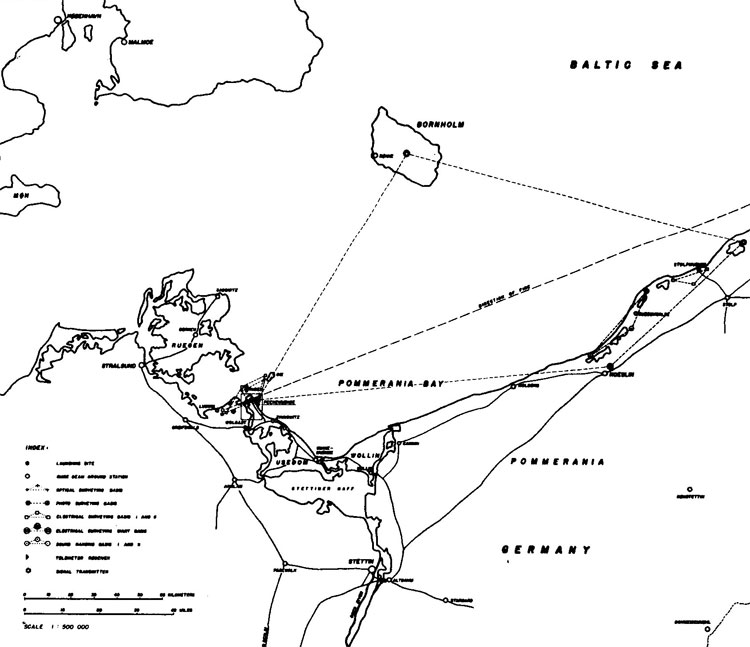
Peenemuende Firing Range
I
A - 1
KUMMERSDORF (near Berlin)
1932 - 33:
Weight: 150 kg (330 lbs)
Length: 1.40 m (4 ft 6 in)
Diameter: 30.4 cm (1 ft)
Fuel: LOX - Alcohol (75%)
Thrust: 300 kg (660 lbs)
Time: 16 sec
G & C Platform: 3 phase electric motors with gyroscope (90 lbs)
Tests:
1. Model exploded at static firing test on 21 December 1932.
2. Model never launched.
Total vehicle was nose-heavy as subsequent studies revealed.
Delayed ignition detonated an explosive mixture which had accumulated in the combustion chamber within 1/2 second.
Test Objectives:
Propulsion & Control Tests
A - 2
KUMMERSDORF (near Berlin)
1934;
Weight:
Length:
Diameter: Same as A-I, only change relocation
Fuel: of stabilized platform.
Thrust:
Time:
G & C Platform: located in the center of the rocket
Launching Place: Island of Borkum, Baltic Sea.
Launchings: December 1934
1. "Max"
2. "Moritz"
Both successful, altitude approximately 1-1/2 miles.
Test Objectives:
Propulsion & Control Tests
SOME IMPORTANT DATA OF THE A-2 ROCKET
DIAMETER 12"
LENGTH 5-1/2"
WEIGHT 400 LB.
THRUST 650 LB.
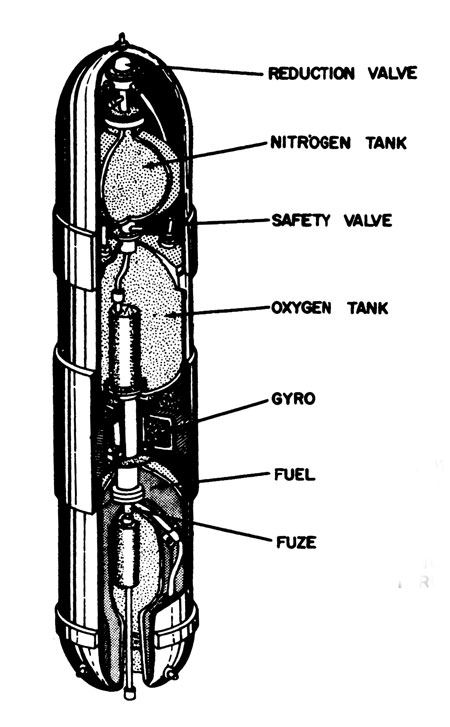
German A-2 Rocket
PEENEMUENDE, Baltic Sea
A - 3
1936;
Weight: 750 kg (1650 lbs)
Length: 6.74 m (22 ft)
Diameter: 67.3 cm (2.2 ft)
Fuel: LOX - Alcohol (75%)
Thrust: 1.5 to (3300 lbs)
Time: 45 sec
G & C Platform: 3 dimensional gyro control system, jet rudders
and rudder actuators
Launching Place: Island of Greifswalder Oie, Baltic Sea
For the first time, liquid nitrogen pressurization system was used.
Launchings:
A - 3/1: 4 December 1937
Take-off perfect.
x + 3 sec parachute ejects (uncontrolled) pulls the rocket to one side.
x + 6.5 sec cut-off.
Rocket hits ground 300 m (9&h ft) from launch place and explodes.
A - 3/2; 6 December 1937
Take-off perfect.
x + 3 sec again parachute ejects.
Again rocket destroyed by explosion.
A - 3/3: 8 December
1937 Parachute taken out.
Take-off perfect.
Rocket again turns sideways, causing cut-off.
Rocket hits Baltic Sea and is destroyed by explosion.
A - 3/4; 11 December 1937
Same results as on 8 December.
Test Objectives:
Steering Control Tests
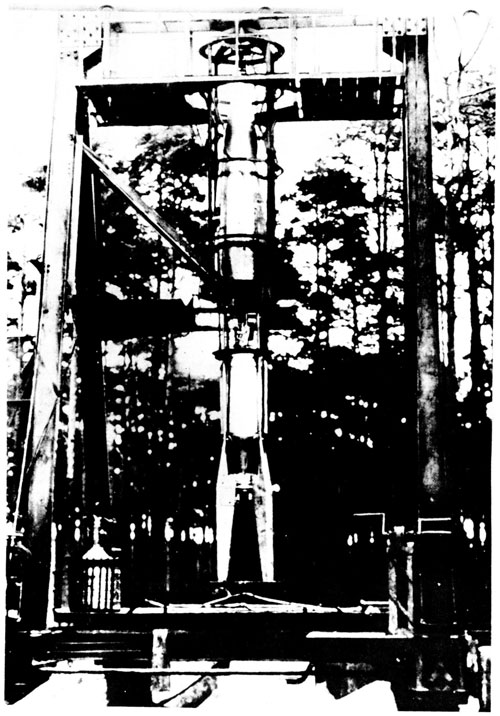
GERMAN A-3 ROCKET IN TEST STAND
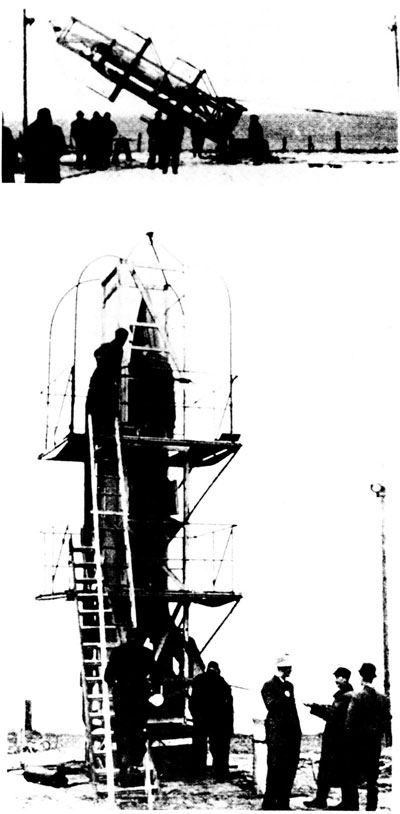
GERMAN A-3 ROCKET DURING AND AFTER ERECTION IN SERVICE TOWER
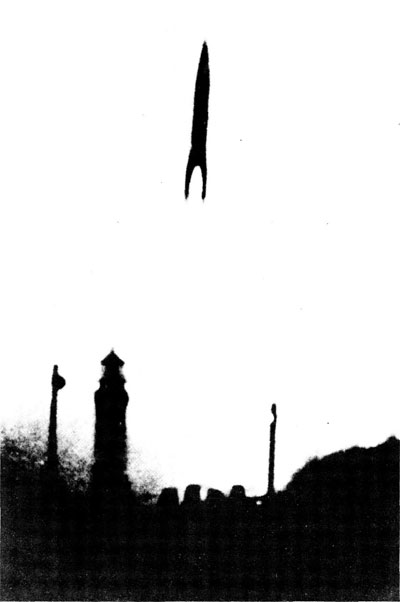
GERMAN A-3 ROCKET AFTER LAUNCH
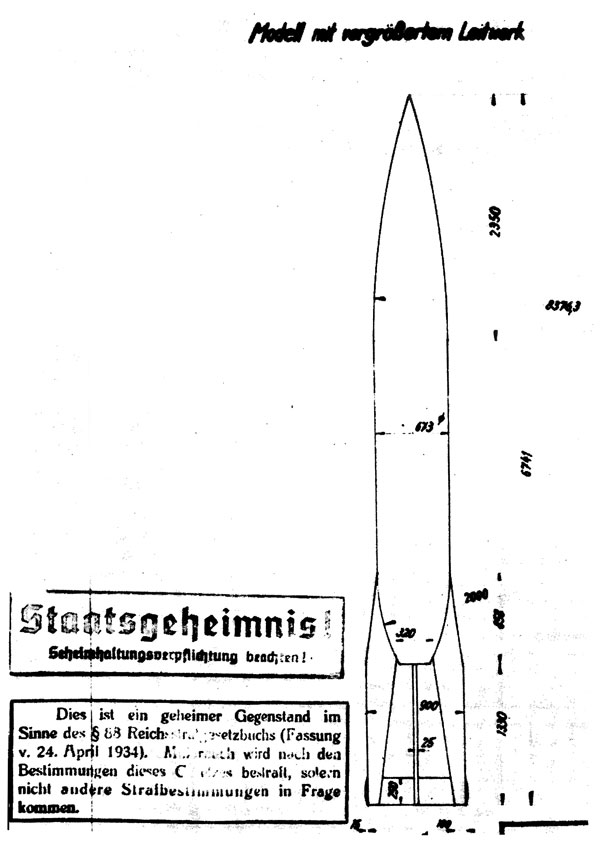
GERMAN A-3 ROCKET
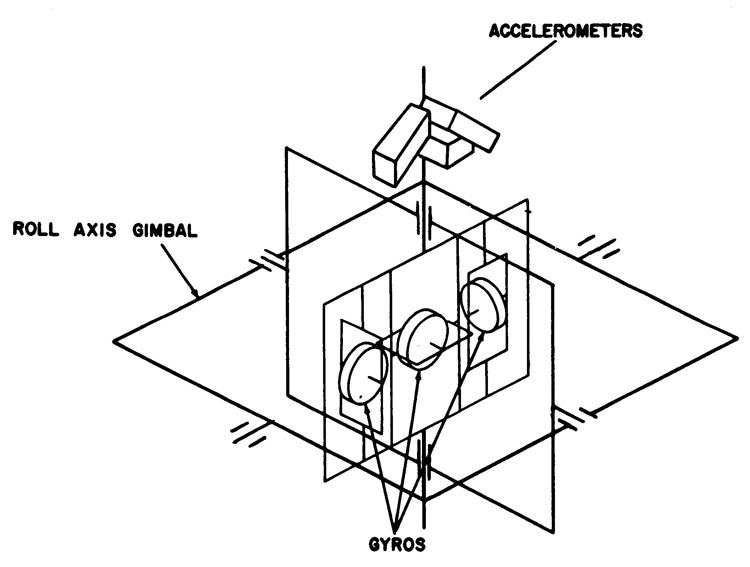
Platform Stabilized for Three Planes of Motion
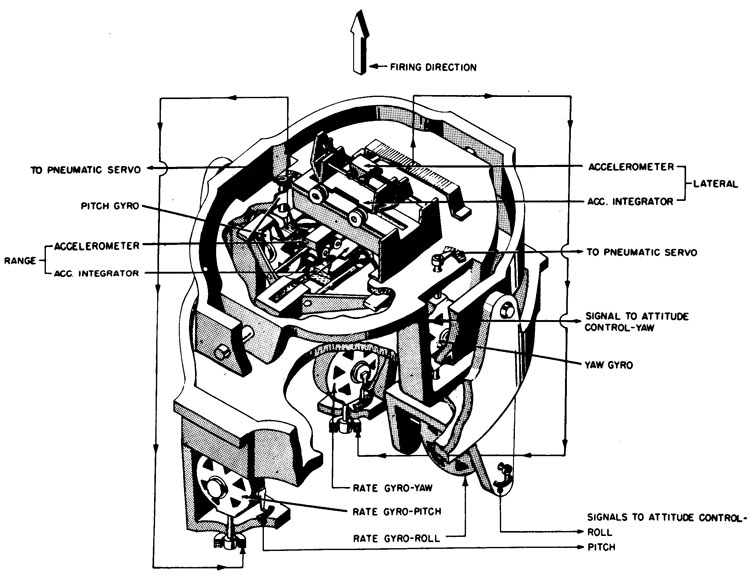
Stable Platform for A-3 Rocket
A-3
PEENEMUENDE Baltic Sea
1937:
Weight: 800 kg (1760 lbs)
Length: 7.4 m (24.2 ft)
Diameter: 75.8 cm (2.5 ft)
Fuel: LOX - Alcohol (75%)
Thrust: 1.5 to (3300 lbs)
Time: 45 sec
Range: 18 km (11.2 mi)
Launching Place: Island of Greifswalder Oie, Baltic Sea
After failures on the A-3 series, new design only retained the experienced power-plant and added a completely new guidance and stabilization system.
1. Test of Scale Models:
a. Dropped from airplanes (summer 1938).
b. Launched without guidance (March 1939)
2. Parachute Tests.
3. Graphite Jet Steering Vanes.
Launchings:
A-5/1, A-5/2 October 1939
Fully equipped A - 5 with new guidance syatem and parachute.
No attempt to go into trajectory.
Heights more than 8 km (£.0 mi).
Recovery on parachutes successful.
A - 5/3; October 1939
Same as A - 5/1 and A - 5/2; full success. First time guidance system fully used ( 45° trajectory).
After this break-through, approximately 70 to 80 launchings took place until late 1942. Some vehicles were refurbished after previous launchings.
A - 5 was used as "test vehicle*' for all different kinds of modifications.
Test Objectives
1. Guidance & Control Tests (LEV - 3).
2. Jet Vane Tests (Carbon).
3. Parachute Tests (Recovery).
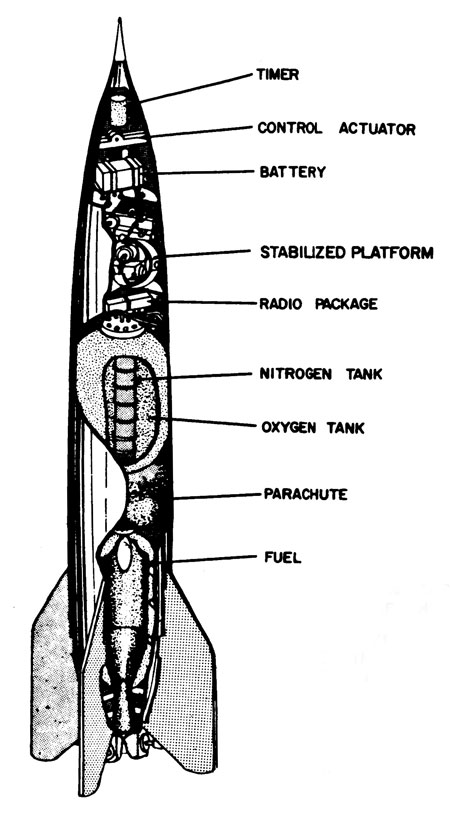
German A-5 Rocket
SOME IMPORTANT DATA OF THE A-5 ROCKET
DIAMETER 28'
LENGTH 22'
WEIGHT (EMPTY) 1,200 LB.
LAUNCHING WEIGHT 1,800 LB.
THRUST DEVELOPED 3,300 LB.
PROPULSION TIME 45 SEC.
ALTITUDE REACHED 13.000 METERS
RANGE 18,000 METERS
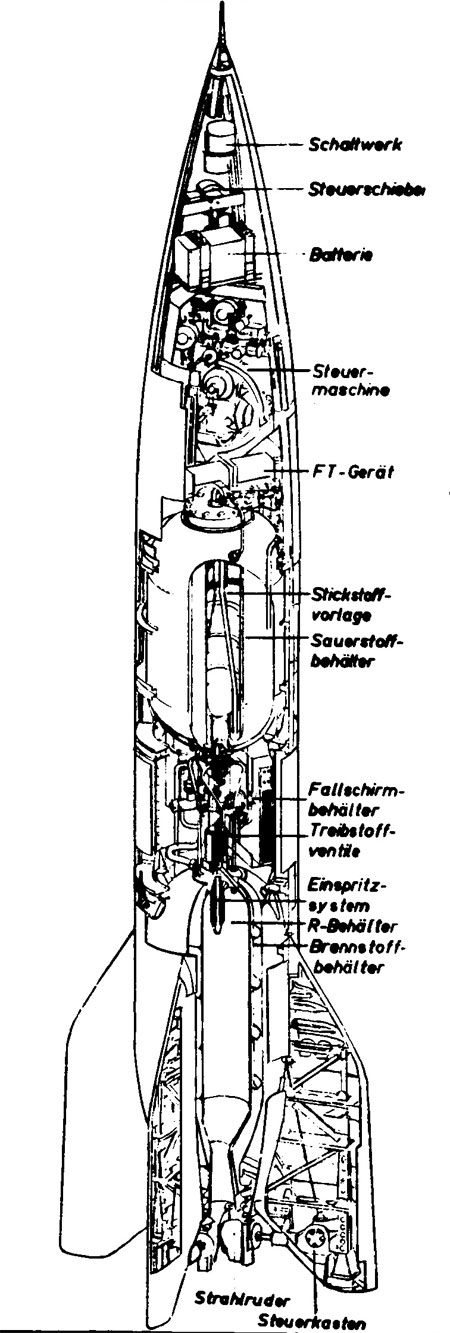
GERMAN A-5 ROCKET
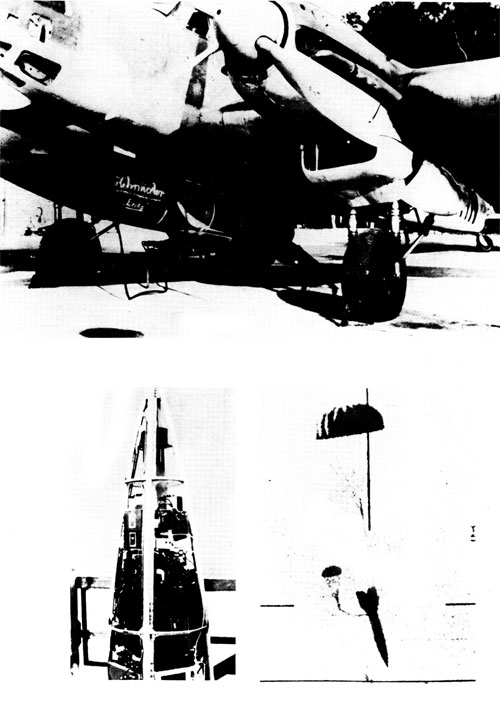
GERMAN A-5 ROCKET DROP-TESTS FROM HE-111

GERMAN A-5 ROCKET OPERATION-DIAGRAM
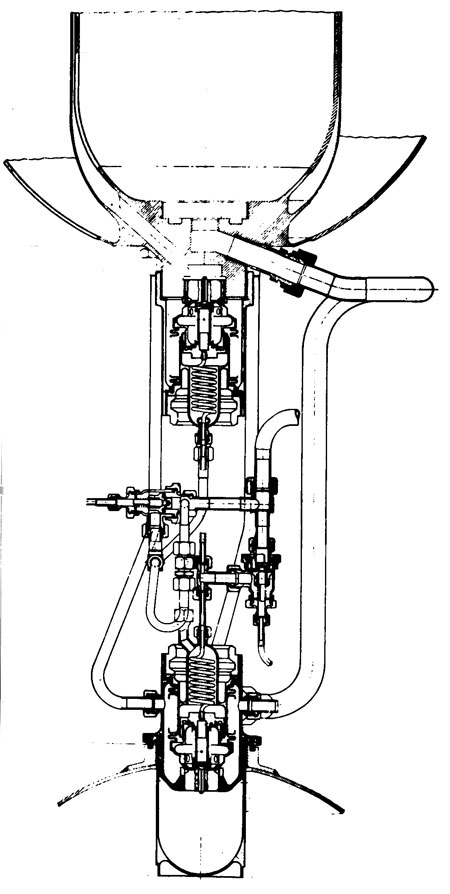
GERMAN A-5 ROCKET FUEL-VALVES
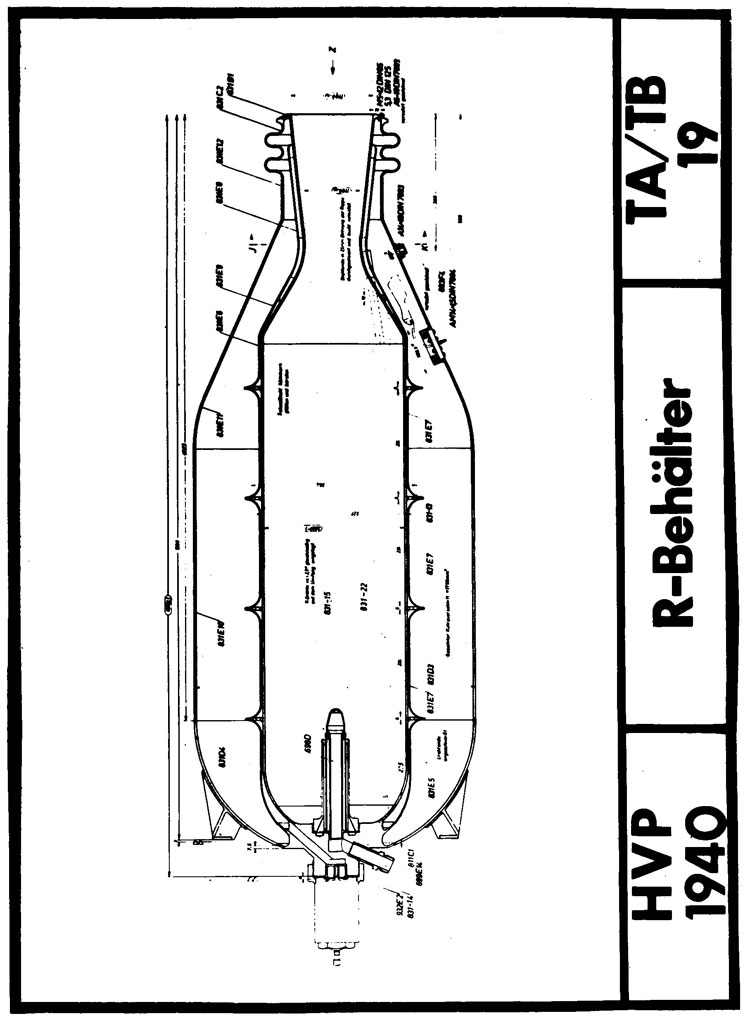
GERMAN A-5 ROCKET COMBUSTION-CHAMBER
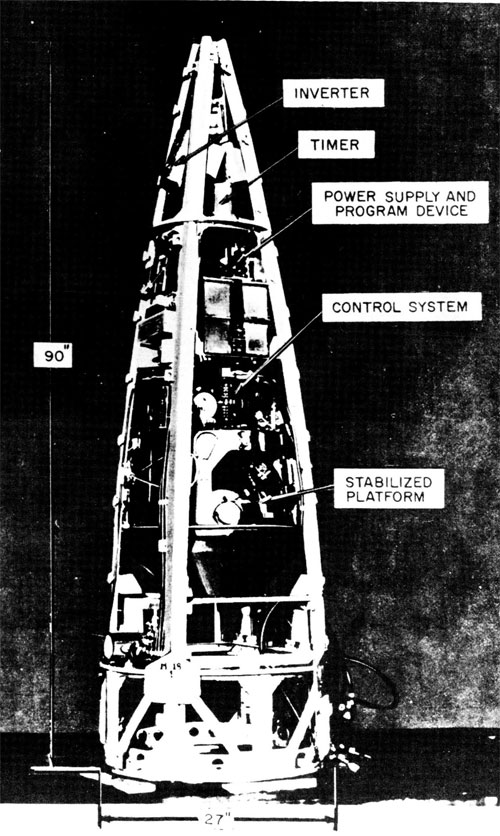
GERMAN A-5 ROCKET INSTRUMENT-COMPARTMENT
II
A - 4
PEENEMUENDE Baltic Sea
"" - 1945
Weight: 12.52 to (27,500 lbs)
Length: 14.3 m (43.6 ft)
Diameter: 1.65 m (5.4 ft)
Fuel: LOX - Alcohol (75%)
Thrust: 25 to (56,000 lbs)
Time: 65 sec
Range: 200 km (125 mi)
Launching Place: Peenemuende, Test Stand VII
For the first time a turbo-pump was incorporated, powered by an 80% hydrogen-peroxide steam generator.
For the first time a new guidance system (LEV-3) with 3-axis stabilized platform was used.
Launchings:
A - 4/1: 18 March 1942
Destroyed during power plant test.
A - 4/2: 13 June 1942
Missile started rotating early after take-off. Correction through guidance first, successful, but later full 360° rotations.
x + 55 (approx) cut-off.
X + 96 (approx) missile hits Baltic Sea approximately 1.3 km from Test Stand VII.
A - 4/3: 16 August 1942
x + 4 electrical power system failure.
x + 20 missile leaves trajectory.
x + 25 Mach 1
x + 45 cut-off (11,720 m height, velocity 651.4 m/sec)
Due to early cut-off, fuel residues destroy tank-heads, explodes, missile burns, tumbles, top section and tail fins break off.
x + 196 missile hits Baltic Sea approximately 8.7 km from Test Stand VII.
A - 4/4: 3 October 1942
First full success.
Missile stays completely within calculated trajectory.
x + 57.8 cut-off (velocity 1500 m/sec, 90 km height).
x + 296 missile hits target 190 km away (Baltic Sea).
A - 4/5: 21 October 19142
Partial success, 147 km.
A - 4/6; 9 November 1942
Guidance trouble, missile does not go into trajectory, straight up 67 km.
A - 4/7; 28 November 1942
Missile tumbles, looses sheet metal exhaust and vent covers, thrust lasts only for 37 seconds.
A - 4/8;
A - 4/9: 12 December 1942
x + 4 explosion during programming into trajectory.
A - 4/10 7 January 1943
Explosion on launcher during ignition.
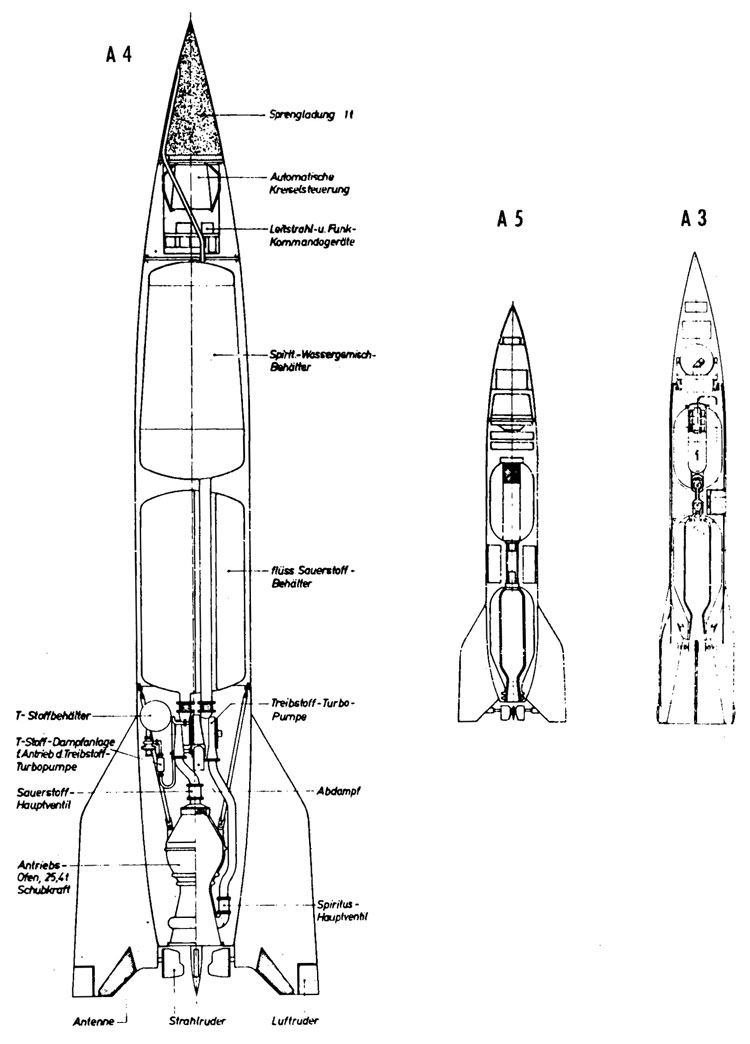
COMPARISON OF GERMAN ROCKETS A-3, A-5, A-4

GERMAN A-4 ROCKET
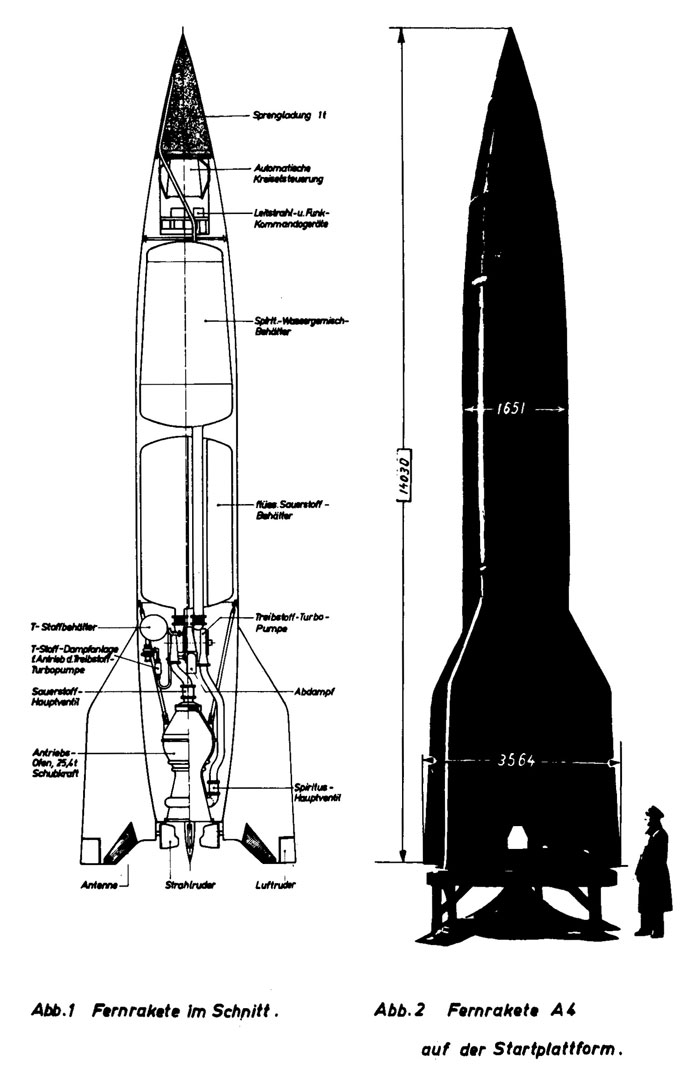
GERMAN A-4 ROCKET CUT-AWAY AND ON LAUNCH PLATFORM
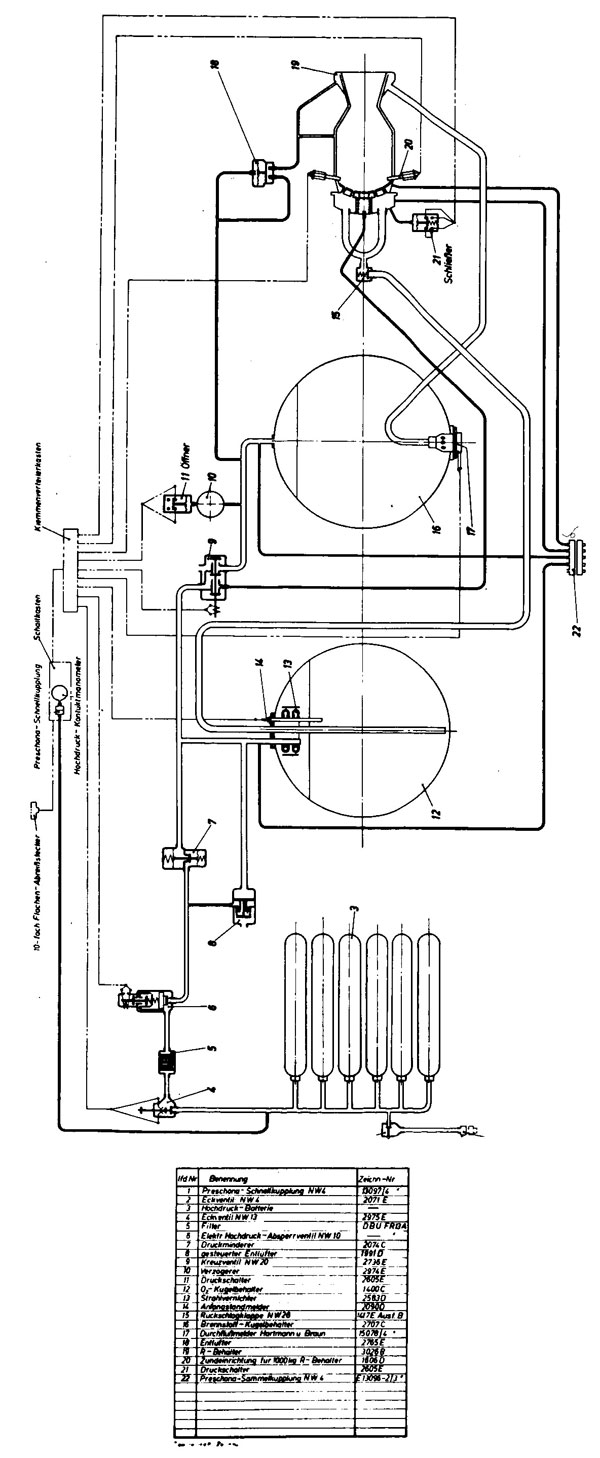
GERMAN A-4 ROCKET OPERATION-DIAGRAM

GERMAN A-4 ROCKET COMBUSTION CHAMBER (R&D)
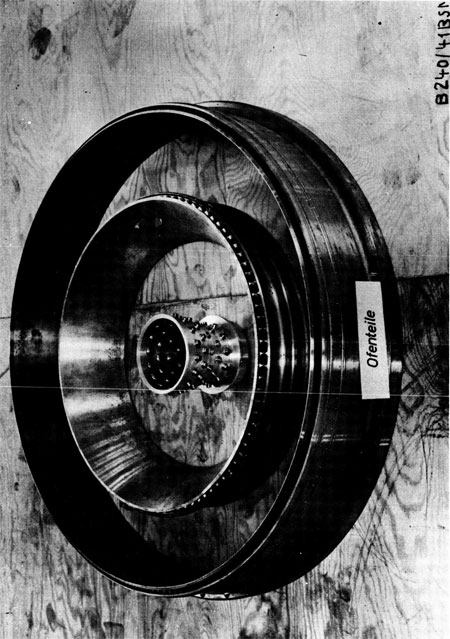
GERMAN A-4 ROCKET COMBUSTION CHAMBER PARTS

GERMAN A-4 ROCKET COMBUSTION CHAMBER (CUT-AWAY)
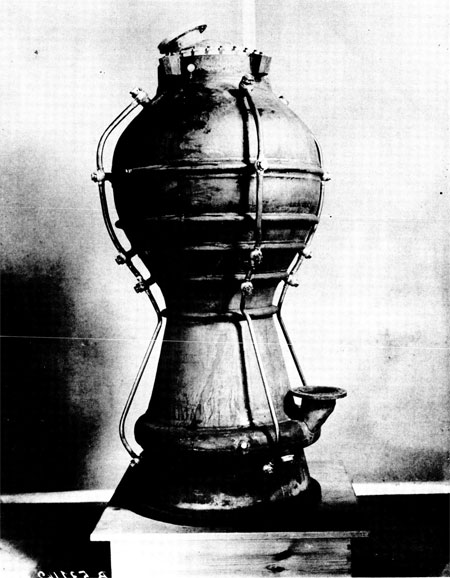
GERMAN A-4 ROCKET COMBUSTION CHAMBER (PRODUCTION)
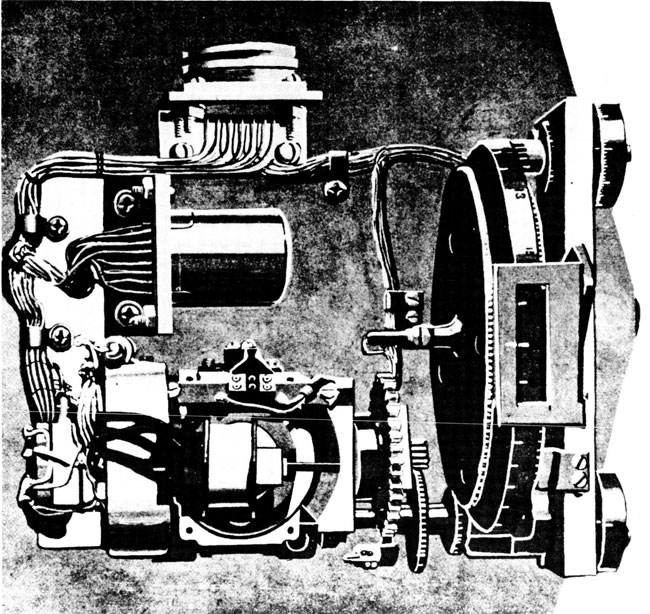
V-2 Propulsion Cut-off Device, System I
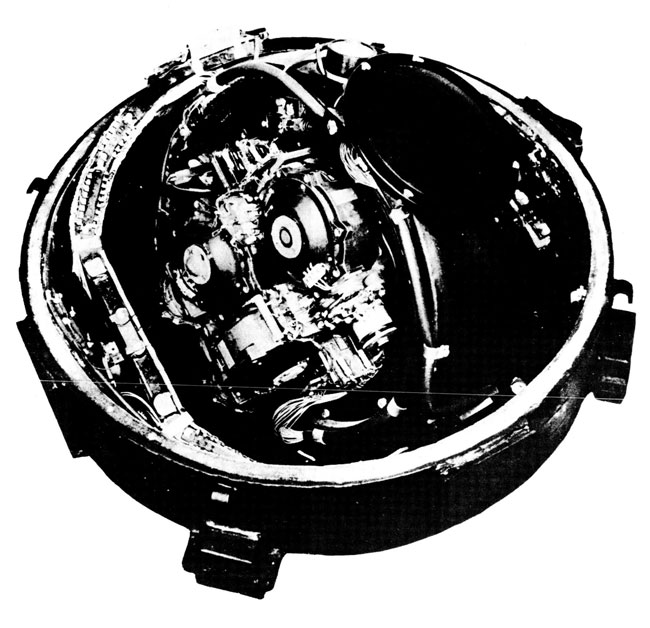
A 4 (V-2) Stabilized Platform
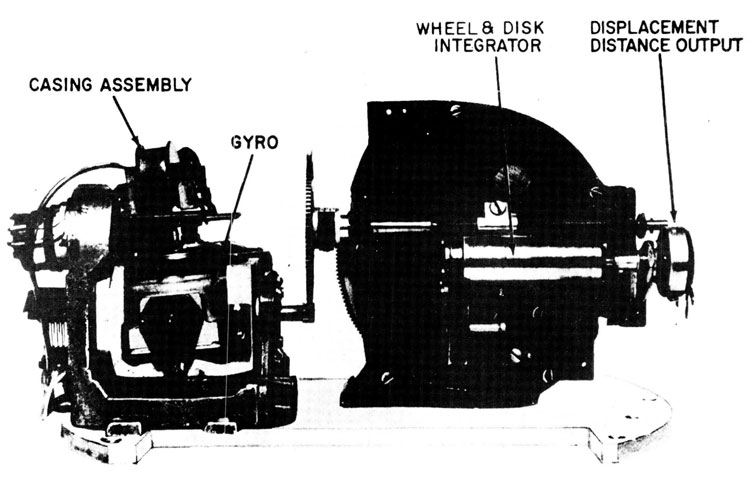
V-2 Propulsion Cut-off Device, System II
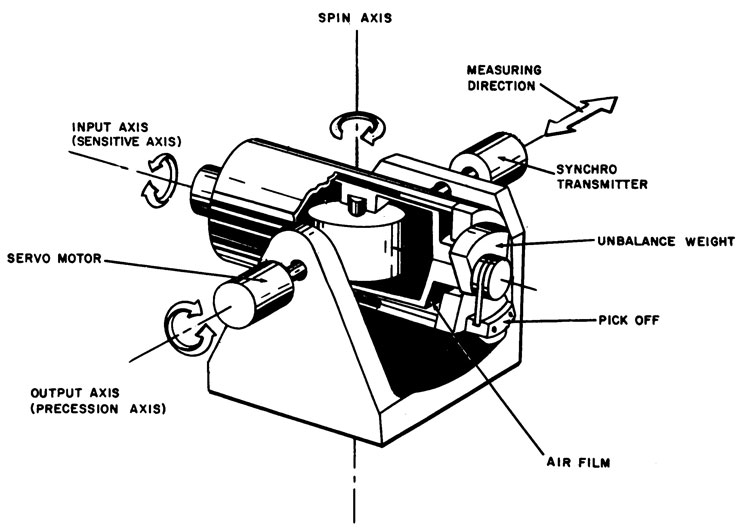
Air-Bearing Gyro Accelerometer
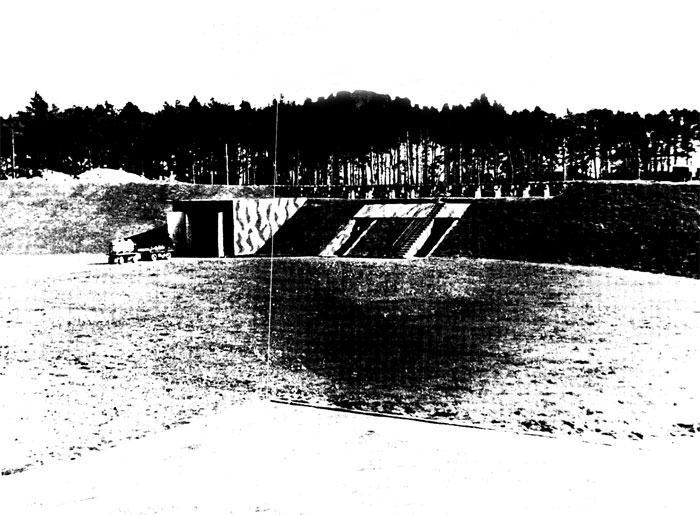
PEENEMUENDE: LAUNCH ARENA
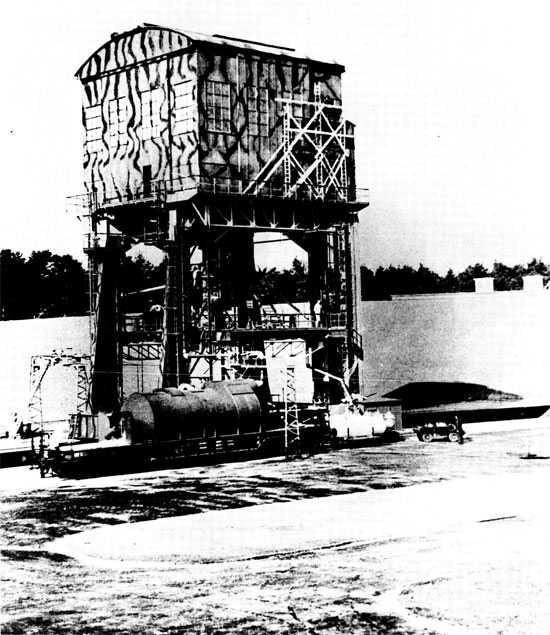
PEENEMUENDE: LAUNCH PREPARATION CAR (ON RAIL TRACKS)
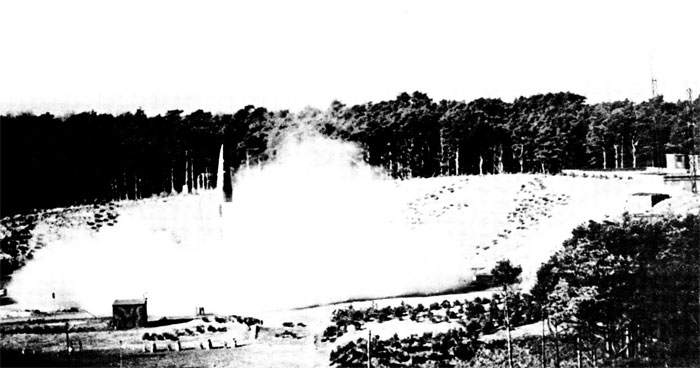
PEENEMUENDE: LAUNCHING OF A-4 ROCKET
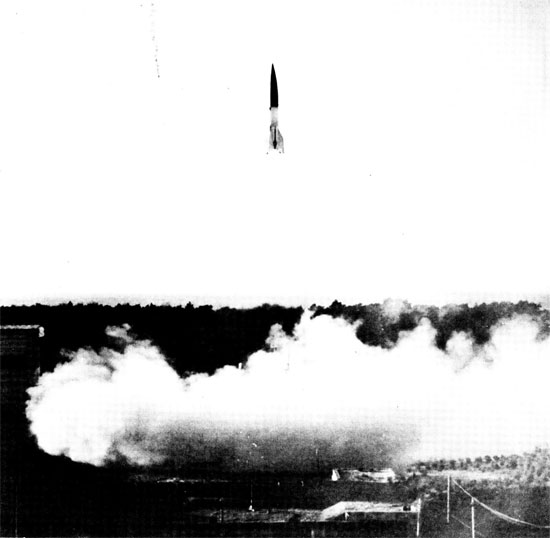
GERMAN A-4 ROCKET AFTER LAUNCH
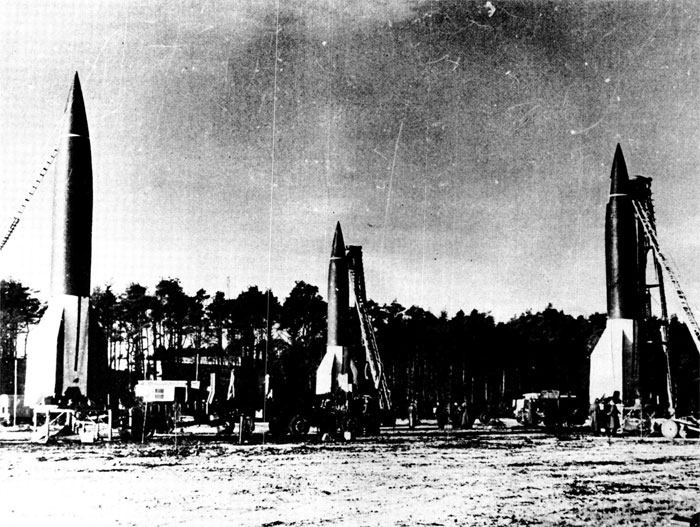
GERMAN A-4 ROCKET GROUP OF 3 DURING LAUNCH PREPARATION
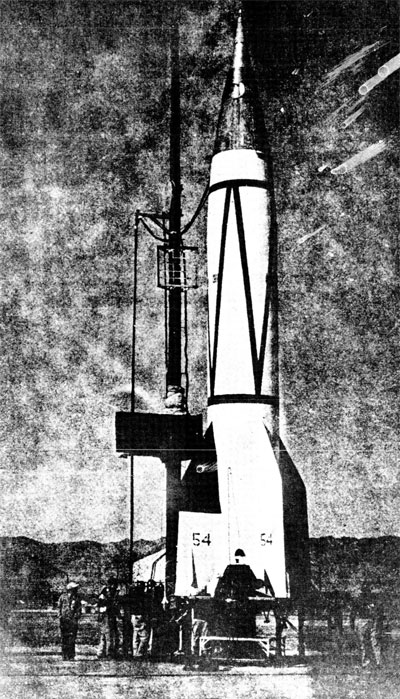
German V-2 Rocket
A - 4b
1944;
Same dimensions as A - 4.
A - 4b was called the "Glider."
Wings were added for use of some of the unused stored-up kinetic energies to reach a target approximately 450 km (281 mi).
A - 4b; 24 January 1945
First successful launch.
Mission not completed due to failure in one wing.
Test Objective:
Increase in target distance.

GERMAN A-4B ROCKET "GLIDER"
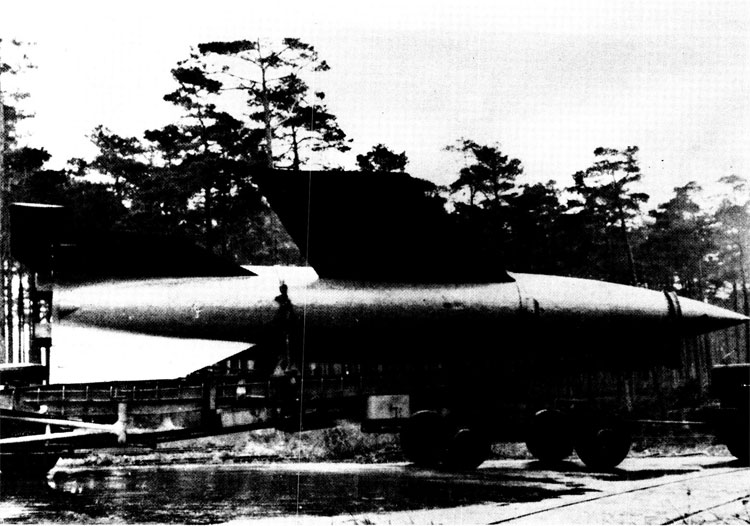
GERMAN A-4B ROCKET ON TRANSPORTER LAUNCHER
III
TECHNICAL DATA FOR (1) Satellite Missiles
(2) Space Vehicles (Outgrowth and further development of the A - 4)
A - 6
1940 - 43:
Blueprint only; never left the drawing board and the preliminary analysis stage.
Design Objective; Subsonic missile.
A - 7
1940 - 43:
Dimensions:
Replica of A - 5 only with wings as forerunner for A - 9, with shape of A - 9 (no payload capability).
Design Objectives;
1i. Model of A - 9 for new steering control device testing ( rocket-glider ).
2. Two models:
a. Drop-glider for ballistic tests, without propulsion unit (Range: dropped from approximately 8000 ft altitude - 45 km).
b. With propulsion unit for normal rocket launching
(approximately 1800 lbs thrust - 25 km).
Tests;
Two drop-glider tests were performed, both unsuccessful, No model of type b. was ever built.
A - 8
1940 - 43:
Blueprint stage only.
Dimensions: Same as A - 4 (without wings).
Design Objective;
1. Increased thrust 66,000 lbs.
a. New fuel: Nitric acid & kerosene.
b. Increased burning time: 90 sec.
Forerunner for A - 9 (as second stage for A - 10).
Tests: Only thrust-chamber tests were run, no vehicle was ever built.
A - 9
1940 - 43:
Size of A - 4 equipped with wings.
Approximately 5 to more thrust (tot 30 to) to cope with added weight of wings.
Range: 800 km (500 mi)
Payload: 1 to (2200 lbs)
Steering: Air vanes (to be operable over entire flight)
Design Objective:
1. Second stage for A - 10 (Rocket Glider).
2. Without booster (A - 4) approximate range 500 mi,
3. Payload: same as A - 4.
Booster: new development & fuel see A - 8.
A - 10
1940 - 44:
Weight: 101,580 kg ( 223,476 lbs)
Length: 26.0 m (80 ft)
Diameter: 4.15 m (12.9 ft)
Fuel: LOX - Alcohol (75%)
Thrust: 200 to (440,000 lbs)
Time: 50 sec
Range: 5500 km (3438 mi)
Blueprint stage only, never left the drawing board.
Design Objectives:
1. Proof of staging principle.
2. First step for satellite missile.
3. First step for space flight.
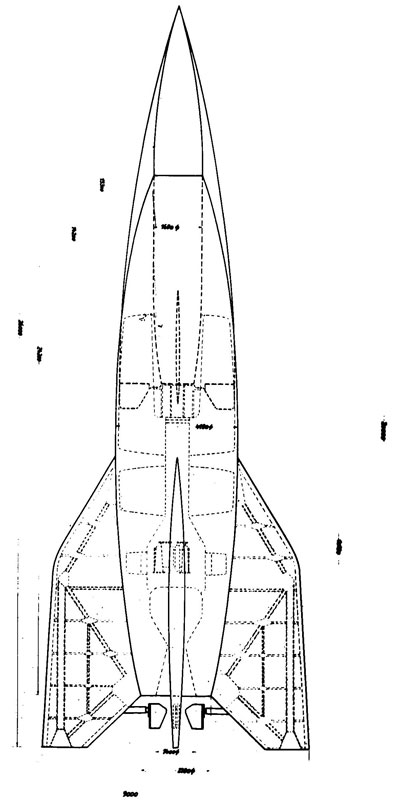
GERMAN A-10 ROCKET

ARRANGEMENT FOR 6 ENGINE BOOSTER (SKETCH)

UPPER: TRAJECTORY FOR A-9 ROCKET. LOWER: TRAJECTORY FOR A-10 ROCKET ALTITUDE AND DISTANCE IN KILOMETERS
The reason for the compilation of this report was the desire to preserve significant historical information before it became lost or misplaced with time. It is hoped that this book has given the reader an inside view of the tremendous amount of work in development, research, and technology which had to be performed within the last 25 to 30 years to make our today's "Space Effort" possible.
This report shows the very early, but real simple or crude start of our rocket, missile, and space development and gives an appreciation of the amount of research performed to come from the "Grand-Daddy" (A-4/V-2) to our present "Space Vehicles" (Saturn IB and Saturn V).